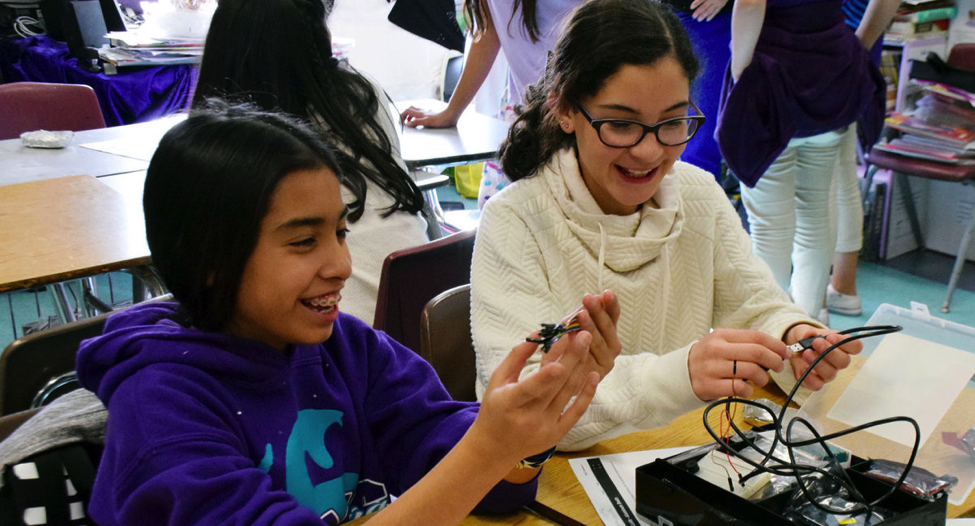
Empowering Girls and Women to Pursue Careers in Science and Technology

Photo © Intel Foundation
Growing up, I was good at science; actually, I was great at it! In fact, I dreamed of being a doctor and even convinced my parents to let me stay up past my bedtime to watch Marcus Welby, M.D. Then one day, I had to participate in a dissection in my science class and I immediately stopped enjoying science class. Shortly after that single dissection experience, my dream career in medicine evaporated. It never occurred to me to explore other avenues of science, such as computer science or engineering and no one, including my teachers, suggested it me.
In many ways, I am amazed that I have built a career in technology for the past 21 years. From the beginning, my mission has been to empower and encourage diversity in the workplace and equality for women and girls. Having women and girls represented in science, technology, engineering, and math (STEM) fields is critical to competitiveness and growth. The absence of women from the conversation, the table, and the room has led to missed opportunities. Now that women make up more than half of the workforce and earn more degrees than men in other areas, it is important to examine and take steps to address why the gender gap in STEM still exists.[1] At Intel, we understand that this examination is not a one-time action, but one that constantly must be reexamined and readjusted.
First, we must acknowledge the facts. If girls don’t embrace science at an early age, then they rarely go on to take computer science classes. If girls aren’t enrolled in computer science classes in high school, then they generally don’t study engineering in college. “Studies show that girls lose interest in math and science during middle school, and computer science and engineering interest for girls is low, compared to boys.”[2] To combat this, the Intel Foundation has launched a pilot program for U.S. middle school girls in Phoenix, Arizona. The goal of this program is to pique girls’ interest and keep them interested in science throughout middle school, so that they enter high school with an interest in studying computer science and engineering.
Since the launch of the program, we have enrolled more than 500 girls from border towns and inner city neighborhoods from Phoenix metropolitan area. These girls excitedly attend the program sessions where they are encouraged to explore computer science, robotics, engineering, and science. In addition to the technical curriculum, we are acutely aware of the need for girls to be supported during their exploration stage and to have role models to look to along the way. This sentiment is shared throughout the Intel community– more than 100 of our Arizona employees, primarily female employees, have already volunteered to mentor, teach, and inspire these girls in their STEM pursuit. Middle school girls represent a wealth of unlimited potential and we are confident this program will transform the lives of girls and provide them with opportunities to explore and excel in their STEM studies.
This initial engagement has been encouraging; however, we know that no one program will close the gender gap in STEM. The irony of it all is women are outnumbering men in medical school enrollment, but computer science and engineering lag behind and have a long way to go to match what we are seeing in medical profession.[3] We all must come together and address this inequity for girls, women, and the future of STEM. Girls today are tomorrow’s technology creators, innovators, and leaders– it’s our job to help them see that as not just a possibility, but a reality.
[1] “Women in the Workforce: United States. Knowledge Center.” August 11, 2016. http://www.catalyst.org/knowledge/women-workforce-united-states
[2] “Excerpts from Generation STEM.” Teaching Tolerance: A Project of the Southern Poverty Law Center Tolerance.org. https://www.tolerance.org/sites/default/files/general/Female%20Identity%20_L2.pdf
[3]Johnson, Steven Ross. “Women outnumber men enrolling in medical school.” Modern Healthcare. December 18, 2017. http://www.modernhealthcare.com/article/20171218/NEWS/171219885
Related Insights


